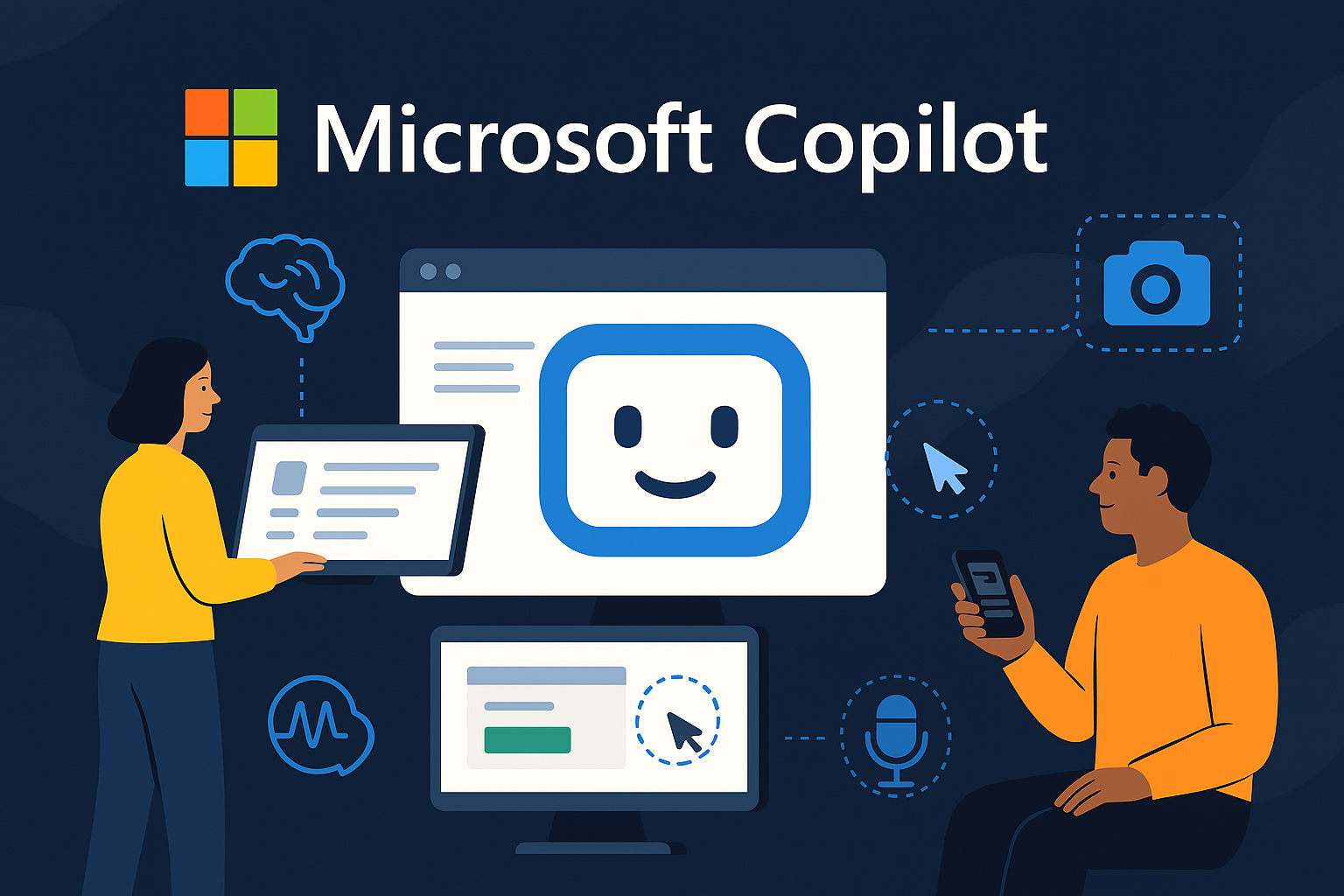AI assistants are getting a serious glow-up—and Microsoft Copilot just set a new standard.
On April 4, 2025, Microsoft announced a sweeping update to its Copilot AI platform, rolling out a suite of features that push the boundaries of what a digital assistant can do. From personalized memory to live video understanding, this update marks a pivotal step in Microsoft’s broader AI strategy—and it’s making Copilot feel less like a chatbot and more like a truly capable co-pilot.
Let’s unpack what’s new, why it matters, and how Copilot now stacks up against other AI heavyweights like ChatGPT, Google Gemini, and Claude.
What’s New in the Microsoft Copilot April 2025 Update?
1. Copilot Memory: Your AI Finally Remembers
Gone are the days of having to remind your AI assistant of your coffee order or favorite team.
With the introduction of Copilot Memory, Microsoft now allows the assistant to remember personal preferences, context, and past interactions to deliver more relevant and proactive suggestions.
How it works:
- Copilot remembers facts like your name, job, preferred tone, and topics of interest.
- You can view, manage, and delete memories at any time via a new dashboard.
- Memory is rolling out gradually and expected to be widely available by May 2025.
Use Case:
Imagine asking Copilot to plan your weekly meals and it already knows you’re vegetarian and hate mushrooms—magic, right?
This puts Copilot on par with ChatGPT’s memory feature (launched in February 2024), but with tighter integration into Microsoft’s ecosystem.
2. Actions on the Web: Copilot Takes Control
Microsoft Copilot can now do things for you on the web—not just tell you how to do them.
Using web-based Actions, Copilot can:
- Book flights and hotels
- Order groceries or food
- Schedule meetings or reservations
- Navigate websites and click buttons for you
Example:
Tell Copilot to book a table at your favorite Italian spot for Friday night, and it’ll handle the whole reservation through OpenTable.
Think of it like a more mature version of Google’s Assistant “Duplex” demo from 2018—except it actually works at scale now.
3. Copilot Vision: Your Camera as Input
In a bold move, Microsoft added live camera input capabilities to mobile Copilot.
Dubbed Copilot Vision, this feature lets the assistant analyze your environment via your smartphone’s camera. It can:
- Identify objects or landmarks in real time
- Help troubleshoot physical tasks (e.g., assembling furniture)
- Read and understand handwritten or printed documents
Example:
Point your phone at your router’s back panel, and Copilot can walk you through how to reset it based on the exact model.
While Google Lens pioneered visual search, Copilot Vision brings real-time analysis directly into the AI assistant context.
4. Deep Research Mode: AI as a Researcher
Tired of skimming 15 tabs to understand one topic?
With Deep Research, Copilot now:
- Gathers, compares, and summarizes information from credible sources
- Cites sources inline
- Produces coherent reports and insights tailored to your request
Perfect for:
- Students writing papers
- Professionals researching competitors
- Curious minds diving deep into niche topics
This brings it closer to tools like Perplexity AI, while adding Microsoft’s polish and productivity integrations.
5. Copilot Podcast Creator: Your Personal Showrunner
Dreaming of starting a podcast but dreading the production hassle? Copilot has you covered.
The new AI podcast generator lets users:
- Input a topic or script
- Choose tone, format, and voice style
- Automatically generate an entire podcast episode, including music and narration
Use Case:
You could create a weekly summary of tech news, narrated in a professional voice, all with a few clicks.
This feature outpaces anything currently offered by Gemini or Claude in terms of media generation.
🔍 How Does Copilot Compare to Other AI Assistants?
| Feature | Microsoft Copilot (Apr 2025) | ChatGPT (OpenAI) | Google Gemini | Anthropic Claude |
|---|---|---|---|---|
| Personal Memory | ✅ Yes (April 2025) | ✅ Yes (Feb 2024) | ❌ Not yet available | ❌ Not available |
| Web Actions | ✅ Yes | ❌ Limited to browsing | ❌ Not available | ❌ Not available |
| Camera Input | ✅ Yes (mobile) | ❌ Not supported | ✅ Yes (Google Lens) | ❌ Not available |
| Deep Research Mode | ✅ Yes | ✅ With plugins | ✅ Yes | ✅ Yes |
| Podcast Generator | ✅ Yes | ❌ Third-party only | ❌ Not available | ❌ Not available |
Verdict:
Microsoft is clearly aiming for holistic integration—building AI into real-world workflows rather than just offering a chat interface.
📲 When & Where Can You Use These Features?
Microsoft says the rollout of these features will be gradual throughout April and May 2025, depending on:
- Your region
- Platform (Windows, Edge, Microsoft 365, mobile)
- Language settings
If you’re using Copilot in Edge or Windows 11, expect early access. For Copilot Pro subscribers, most of these updates will be prioritized.
Final Thoughts: The AI Assistant Race Is Heating Up
Microsoft’s April 2025 Copilot update feels like a leap—not just a step—toward a more useful, proactive AI.
Rather than acting like a glorified chatbot, Copilot is now becoming a true digital assistant—one that:
- Remembers your preferences
- Navigates websites for you
- Sees the world around you
- Generates rich media
- Helps you think, write, and research better
This makes it not only a compelling competitor to ChatGPT and Gemini but possibly the most practical AI for real-world use—especially for professionals and power users in the Microsoft ecosystem.
✅ TL;DR – What You Need to Know
- 📅 Released: April 4, 2025
- 🧠 Copilot now includes memory for personalization
- 🌐 Can perform web-based actions like booking or ordering
- 📷 Adds real-time camera input for visual understanding
- 🔎 Includes a powerful Deep Research feature
- 🎙️ Lets you generate AI-hosted podcasts
- 🆚 Surpasses ChatGPT and Gemini in practical daily tasks
